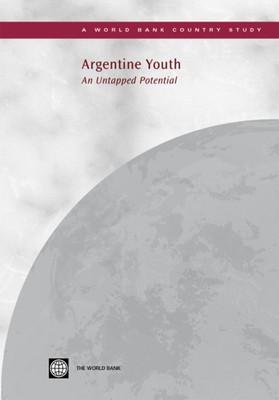
- We will send in 10–14 business days.
- Publisher: World Bank Publications
- ISBN-10: 0821379240
- ISBN-13: 9780821379240
- Format: 17.5 x 24.9 x 0.8 cm, softcover
- Language: English
- SAVE -10% with code: EXTRA
Argentine Youth (e-book) (used book) | bookbook.eu
Reviews
Description
Argentina's youth--6.7 million between the ages of 15 and 24--are an important, but to a certain extent untapped, resource for development. Over 2 million (31 percent) have already engaged in risky behaviors, and another 1 million (15 percent) are exposed to risk factors that are correlated with eventual risky behaviors. This totals 46 percent of youth at some form of risk. This book addresses the risks faced by youth in Argentina such as low education attainment, unemployment, teenage pregnancy, use and abuse of drugs and alcohol, becoming victims of crime, and low level of civic participation, as well as the policy options for addressing them. The chance of reducing the numbers of youth at risk over the long term is greatest by focusing policies and programs on the individual (improving life skills, self-esteem), on key relationships (parents, caregivers, peers), on communities (schools, neighborhoods, police), and on societal laws and norms. Specific recommendations were developed during consultations with government counterparts.
EXTRA 10 % discount with code: EXTRA
The promotion ends in 20d.19:13:23
The discount code is valid when purchasing from 10 €. Discounts do not stack.
- Publisher: World Bank Publications
- ISBN-10: 0821379240
- ISBN-13: 9780821379240
- Format: 17.5 x 24.9 x 0.8 cm, softcover
- Language: English English
Argentina's youth--6.7 million between the ages of 15 and 24--are an important, but to a certain extent untapped, resource for development. Over 2 million (31 percent) have already engaged in risky behaviors, and another 1 million (15 percent) are exposed to risk factors that are correlated with eventual risky behaviors. This totals 46 percent of youth at some form of risk. This book addresses the risks faced by youth in Argentina such as low education attainment, unemployment, teenage pregnancy, use and abuse of drugs and alcohol, becoming victims of crime, and low level of civic participation, as well as the policy options for addressing them. The chance of reducing the numbers of youth at risk over the long term is greatest by focusing policies and programs on the individual (improving life skills, self-esteem), on key relationships (parents, caregivers, peers), on communities (schools, neighborhoods, police), and on societal laws and norms. Specific recommendations were developed during consultations with government counterparts.


Reviews